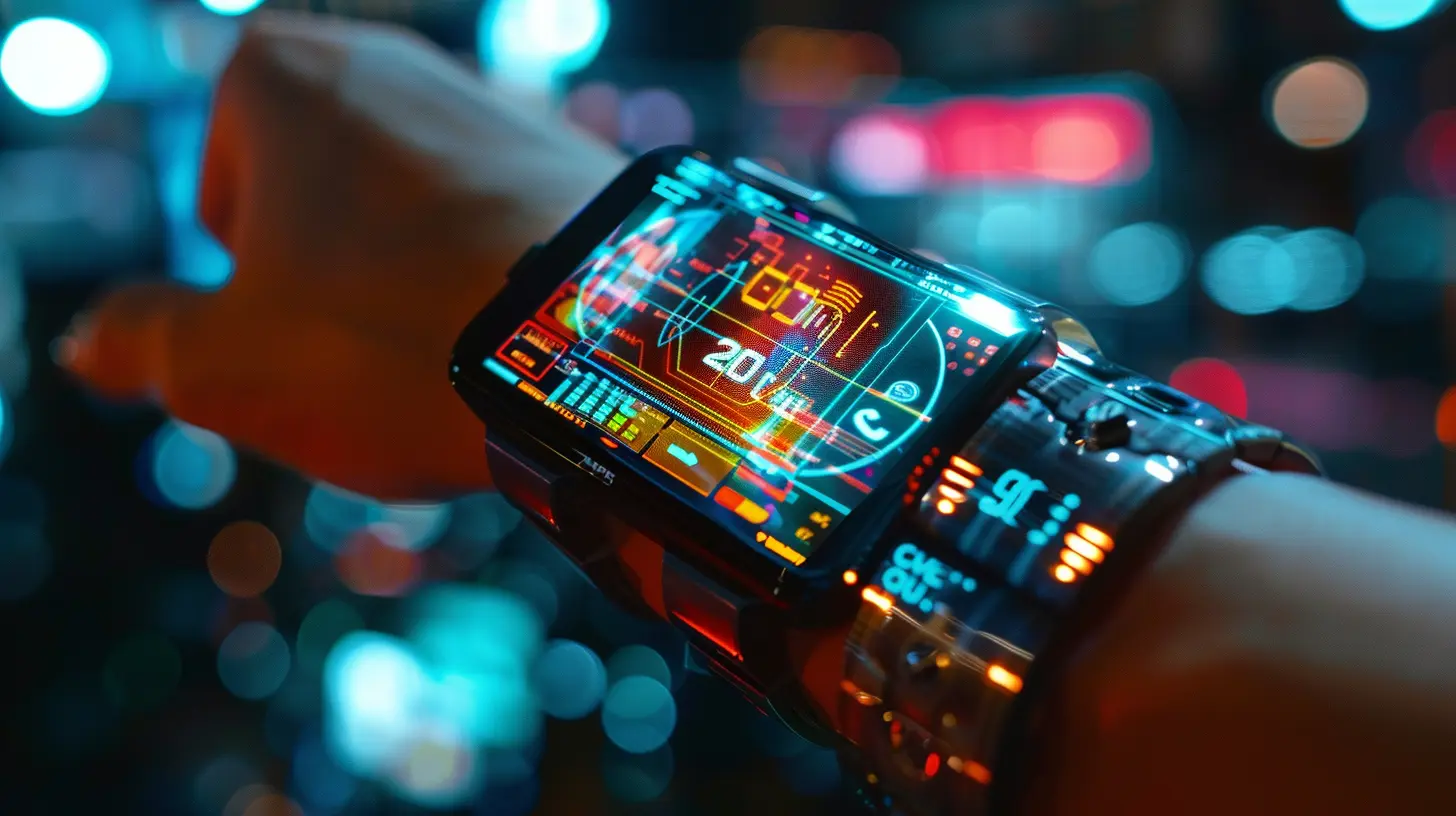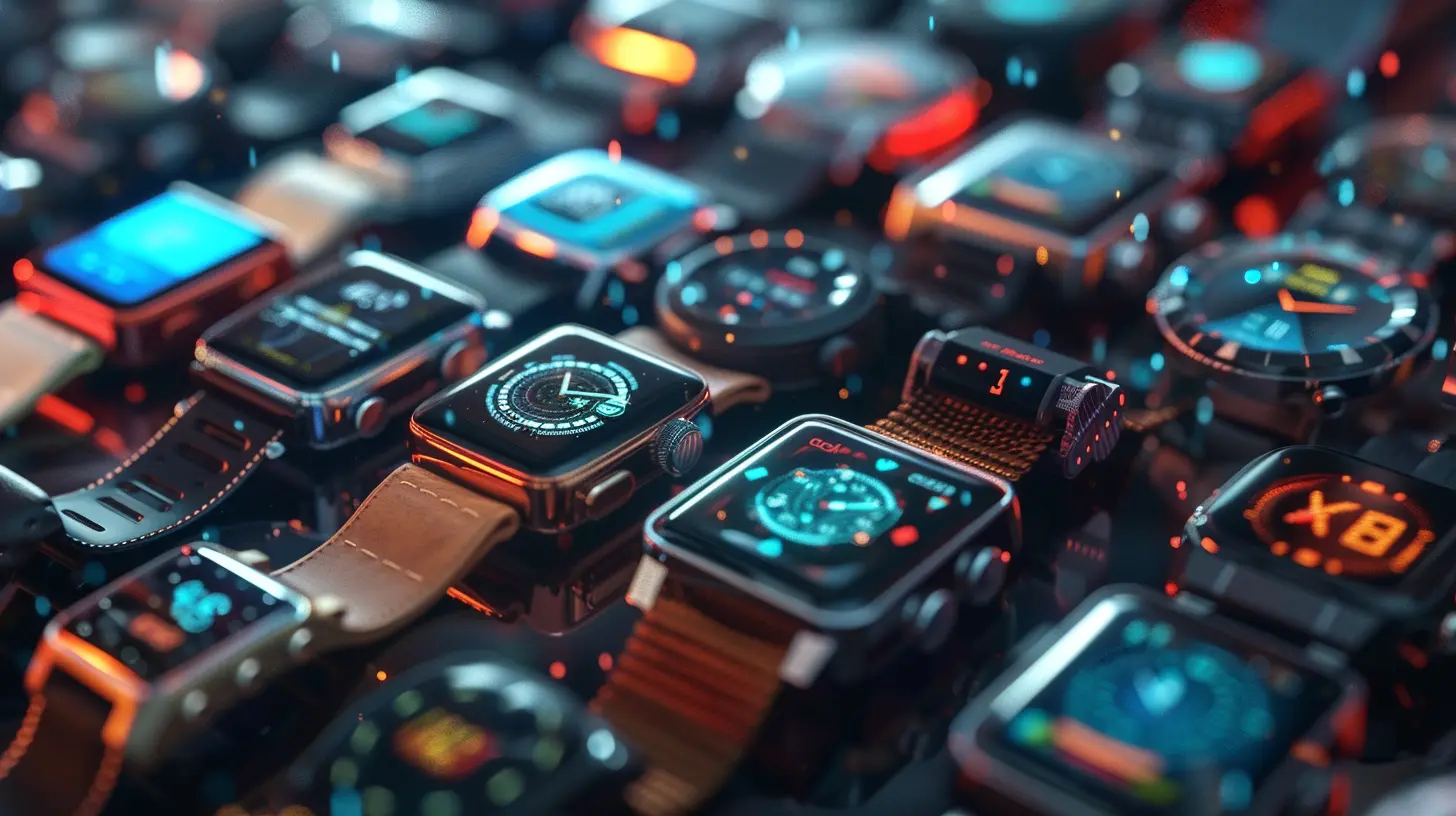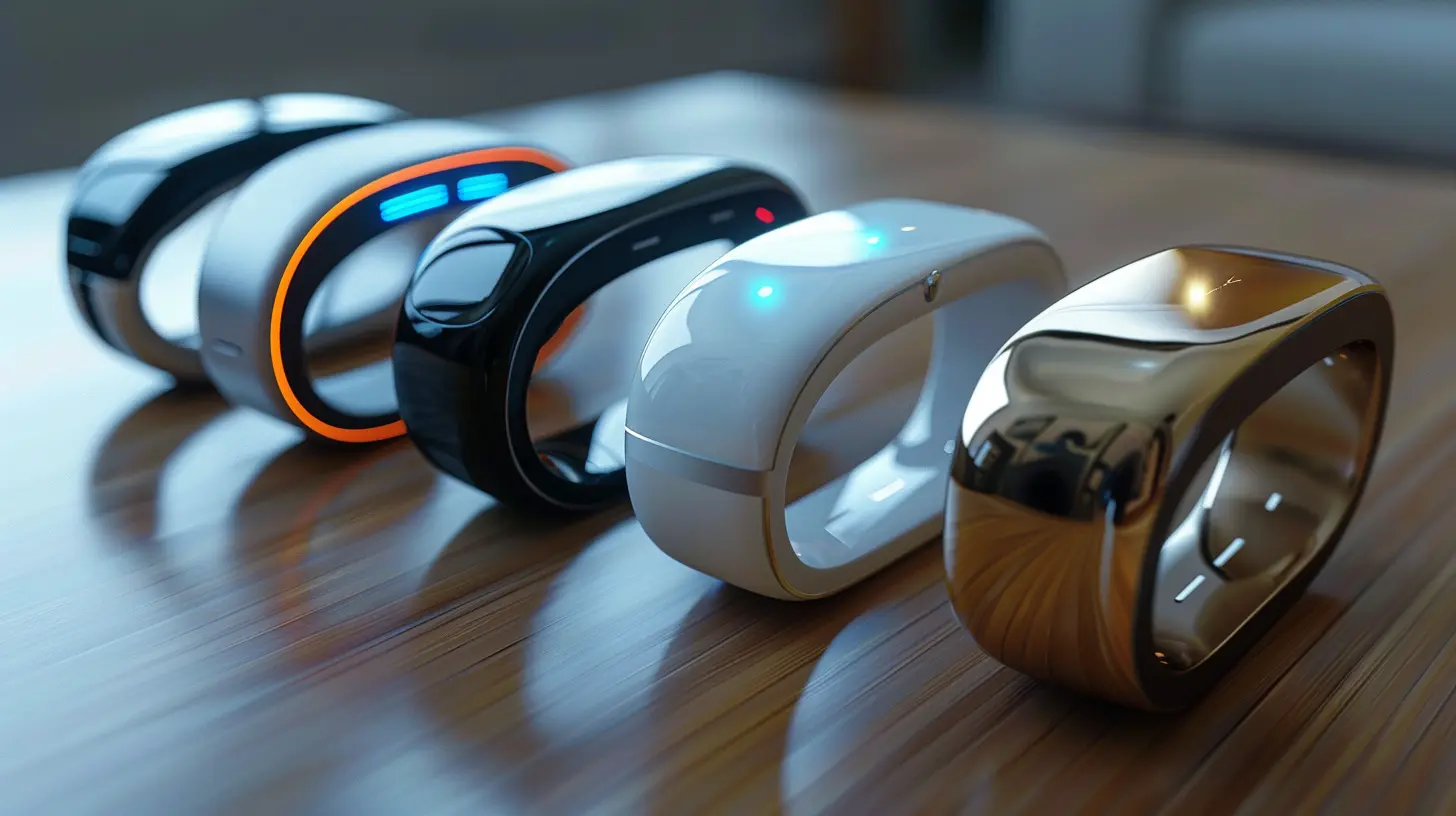Exploring the Convergence of Mobile Devices and Wearable Tech
19 November 2024
The tech landscape is changing faster than ever before. If you look around, you'll probably notice that mobile devices and wearable gadgets are no longer existing in their own separate bubbles. Instead, their paths are crossing, merging, and creating new synergies that are transforming how we interact with technology. But what does this convergence mean for the everyday user? How are smartphones and wearables coming together to shape our digital lives? Let's dive into the nitty-gritty of this exciting tech evolution.

The Growing Synergy Between Mobile Devices and Wearables
Mobile devices, particularly smartphones, have become the central hub of our digital existence. Meanwhile, wearables—think smartwatches, fitness trackers, and even AR glasses—are designed to complement these devices, extending their functionality in ways that are becoming more seamless by the day.In the early days, wearables were mostly standalone gadgets with limited functionality. Remember those early fitness trackers that could only count your steps and calories? Yeah, we've come a long way since then. Today, wearables are tightly integrated with our smartphones, providing real-time notifications, health tracking, and even allowing us to interact with apps without ever pulling out our phones.
Why is This Convergence Happening?
In the world of tech, convenience is king. The convergence of mobile devices and wearable tech is being driven by our desire for always-on connectivity and effortless interaction with our digital world. We want to stay connected, but we don't always want to be glued to our phones. Wearables offer a hands-free experience that allows us to stay in the loop without the constant distraction of checking a screen.Companies are paying attention to this trend, too. The likes of Apple, Google, and Samsung are increasingly designing their ecosystems to leverage this mobile-wearable integration. Apple’s ecosystem, for instance, makes it easy to switch between your iPhone, Apple Watch, and AirPods without skipping a beat. It’s all about convenience—letting you seamlessly move from one task to another without having to juggle multiple devices.

Key Areas Where Mobile Devices and Wearables Work Hand-in-Hand
So, how exactly are mobile devices and wearables converging? Here are some of the most exciting areas where this synergy is playing out:1. Health and Fitness Tracking
Let’s be real—fitness and health tracking has been one of the biggest selling points for wearables. But the real magic happens when wearables and smartphones work together. Your smartwatch may count your steps or monitor your heart rate, but it’s your smartphone that often crunches the numbers, offers insights, and stores long-term data.For example, Apple’s Health app aggregates data from your Apple Watch, iPhone, and even third-party apps to give you a complete picture of your health. Meanwhile, Google Fit syncs seamlessly with Android phones and wearables, letting you track your workouts, set goals, and monitor progress over time.
This convergence means that wearables are no longer just passive tools; they are integrated devices that give you actionable insights into your health. Want to lower your stress levels? Your smartwatch might give you real-time feedback on your heart rate variability, while your phone offers guided meditation sessions to help you relax.
2. Notifications and Communication
We've all been there: your phone buzzes in your pocket, and you have to awkwardly dig it out, just to see a notification that could have waited. Wearables, especially smartwatches, solve this problem by offering quick-glance notifications that keep you in the loop without the hassle.With wearable devices like the Apple Watch or Samsung Galaxy Watch, you can check your messages, emails, or even take calls without ever pulling out your phone. This seamless communication system is a game-changer for people on the go, and it's made possible by the tight integration between mobile devices and wearables.
But it goes beyond just notifications. You can now use voice assistants like Siri or Google Assistant on your wearable to send messages, check the weather, or even control smart home devices. It’s like having a mini smartphone strapped to your wrist, minus the bulk.
3. Mobile Payments
The convergence of mobile devices and wearables has also revolutionized the way we make payments. Contactless payments have been growing in popularity, and wearables are playing a big part in that.With Apple Pay or Google Pay, you can use your smartwatch to pay for groceries, coffee, or even public transport without needing to fumble around for your wallet or phone. These payments are secure, quick, and incredibly convenient, making them perfect for our fast-paced, always-on-the-go lifestyles.
Wearables are also making it possible for more people to embrace the cashless society. Whether you’re going for a run or simply don’t want to carry a bulky wallet, wearable devices offer a hassle-free payment option that enhances the convenience of mobile payments.
4. Enhanced Personalization
Another cool aspect of the mobile-wearable convergence is the level of personalization it brings to the table. Wearables collect tons of data—your location, activity, heart rate, even your sleep patterns. When this data is synced with your mobile device, it can be used to offer personalized recommendations, guided workouts, or even help you manage your daily schedule more efficiently.For instance, if your smartwatch detects that you’ve had a poor night’s sleep, your phone might suggest some guided relaxation exercises or adjust your calendar to make space for a power nap. It’s a bit like having a digital personal assistant that knows you better than you know yourself.
On the fitness front, wearables and mobile apps work together to offer personalized workout routines based on your activity levels and goals. You don’t have to manually input anything—your wearable does the tracking, and your phone does the coaching.
5. Augmented Reality (AR) and Virtual Reality (VR)
While wearables like smartwatches and fitness trackers have dominated the market, we're also starting to see the rise of AR and VR technology. This is where things get really futuristic. Devices like Google Glass and Facebook’s Oculus Rift are pushing the boundaries of what wearables and mobile devices can do.AR wearables like Google Glass work in tandem with mobile devices to offer information overlays in real-time. Imagine walking down the street and getting navigation directions right in your line of sight—no need to pull out your phone. VR headsets, on the other hand, use the processing power of mobile devices to offer immersive experiences, whether for gaming, virtual meetings, or training simulations.

The Future of Mobile and Wearable Tech Convergence
Now that we've explored how mobile devices and wearables are working together, what's next? The future looks incredibly promising, with several trends pointing to even deeper integration between these two types of devices.1. 5G and Faster Connectivity
One of the most exciting developments in mobile tech is the rollout of 5G. This next-generation network promises lightning-fast connectivity, which will make it easier for wearables and mobile devices to communicate with each other in real time. Imagine streaming high-definition video directly to your AR glasses or receiving real-time health alerts from your smartwatch without any lag.With 5G, we’ll likely see more advanced functionalities in wearables, such as real-time health monitoring and instant data syncing with mobile devices. Faster connectivity will also facilitate more seamless experiences in AR and VR, making these technologies more practical for everyday use.
2. Smarter AI Integration
Artificial Intelligence (AI) is becoming smarter by the day, and the convergence of mobile devices and wearables will benefit greatly from this. In the future, we can expect our devices to learn our habits and preferences, offering personalized recommendations that are even more accurate than they are today.For instance, AI could analyze your daily activity and recommend a workout routine that’s tailored to your exact fitness level. Or, it could analyze your sleep patterns and suggest ways to improve your rest. The possibilities are endless.
3. More Advanced Health Monitoring
Wearable tech is already doing a great job of tracking basic health metrics like heart rate and step count, but the future is all about going deeper. We’re already seeing wearables that monitor blood oxygen levels, detect irregular heartbeats, and even track stress levels. In the future, it’s likely that wearables will evolve to become even more accurate and capable of monitoring a wider range of health metrics.Imagine a wearable that can detect early signs of illness or even predict when you’re about to get sick. By syncing with your mobile device, it could alert you to take preventive measures, possibly reducing the need for doctor visits.
4. Wearables as Primary Devices?
As wearables continue to evolve, it’s possible that they could eventually take over many of the tasks currently handled by smartphones. Think about it—if your smartwatch can handle calls, messages, fitness tracking, payments, and more, why would you even need a bulky phone?Of course, smartphones aren’t going anywhere just yet, but we may see a future where wearables become the primary device for many users, with smartphones playing a more secondary role.

Conclusion
The convergence of mobile devices and wearable tech is transforming how we interact with the digital world. From health tracking and notifications to mobile payments and AR experiences, these technologies are becoming more intertwined and seamless by the day. As 5G and AI continue to advance, the future promises even more exciting developments. Whether you’re a fitness enthusiast, a tech geek, or just someone who loves the convenience of always-on connectivity, the convergence of mobile and wearable tech is something you’ll want to keep an eye on.all images in this post were generated using AI tools
Category:
Mobile TechnologyAuthor:

Kira Sanders
Discussion
rate this article
18 comments
Ashley Ramirez
The fusion of mobile devices and wearable tech is revolutionizing our lives! This convergence not only enhances connectivity but also empowers health, productivity, and creativity in unprecedented ways. Embrace the future where innovation knows no bounds—let’s harness this synergy to unlock limitless possibilities together!
February 28, 2025 at 5:35 AM

Kira Sanders
Absolutely! The synergy between mobile devices and wearables is indeed transforming our daily lives, fostering innovation and unlocking new opportunities across various fields. Exciting times ahead!
Paxton Stevens
As boundaries blur, we must ponder: will convenience outweigh the privacy costs of interconnected devices?
February 8, 2025 at 9:34 PM

Kira Sanders
Absolutely, the trade-off between convenience and privacy is crucial as technology advances. We must prioritize safeguarding personal data while embracing the benefits of interconnected devices.
Diana Sullivan
The convergence of mobile devices and wearable technology marks a significant shift in user interaction and data accessibility. As these technologies continue to integrate, we can expect enhanced functionality, improved health monitoring, and a seamless user experience, ultimately reshaping our daily habits and lifestyle choices.
February 2, 2025 at 8:44 PM

Kira Sanders
Thank you for your insightful comment! I completely agree that the integration of mobile devices and wearables is revolutionizing our interactions and daily routines, offering exciting possibilities for health and convenience.
Zephyrion Sheppard
The fusion of mobile devices and wearables redefines our relationship with technology, making it more intimate and omnipresent.
January 29, 2025 at 9:15 PM

Kira Sanders
Absolutely! This convergence enhances accessibility and personalization, fundamentally changing how we interact with technology in our daily lives.
Riff Malone
Exciting times ahead for tech innovation!
January 20, 2025 at 9:31 PM

Kira Sanders
Absolutely! The fusion of mobile and wearable tech promises to revolutionize our daily lives. Exciting indeed!
Thistle McSweeney
Mobile and wearable tech are not just accessories; they’re the future of seamless connectivity and personal empowerment. Embrace the change!
January 13, 2025 at 12:47 PM

Kira Sanders
Absolutely! The integration of mobile and wearable tech is transforming how we connect and interact with the world, enhancing our lives in unprecedented ways. Embracing this change is essential for harnessing its full potential.
Kaleb Rosales
The convergence of mobile devices and wearable tech represents a pivotal shift in user interaction and data integration. This synergy enhances functionality, encouraging seamless connectivity and personalization, while raising questions about privacy and dependency. Future innovations will likely redefine everyday experiences.
January 5, 2025 at 8:16 PM

Kira Sanders
Thank you for your insightful comment! I completely agree that this convergence is transformative, enhancing user experience while also prompting important discussions about privacy and dependency. It will be fascinating to see how future advancements address these challenges.
Selena McGrady
As mobile devices and wearables intertwine, we witness a profound shift in our relationship with technology. This convergence not only enhances convenience but also raises questions about privacy, identity, and dependency. Are we augmenting our humanity or merely trading one form of distraction for another? The future beckons us to choose wisely.
December 28, 2024 at 1:37 PM

Kira Sanders
Thank you for your insightful comment! The convergence of mobile devices and wearables indeed presents both opportunities and challenges, prompting us to carefully consider the impact on our lives and identities as we navigate this evolving landscape.
Elowyn Watson
The synergy between mobile devices and wearable tech is revolutionizing user experience, fostering seamless connectivity and personalized interactions. This convergence not only enhances functionality but also redefines how we engage with technology daily.
December 23, 2024 at 2:09 PM

Kira Sanders
Thank you for your insightful comment! I completely agree that the synergy between mobile devices and wearables is transforming user experience and connectivity in profound ways.
Odessa Kim
The fusion of mobile devices and wearable technology is revolutionizing our interaction with the digital world. This convergence not only enhances convenience but also empowers us to lead healthier, more connected lives. Embrace this technological evolution—it's not just about devices; it's about unlocking our limitless potential. The future is now!
December 18, 2024 at 10:09 PM

Kira Sanders
Absolutely! The integration of mobile and wearable tech is indeed transforming our daily lives, promoting health, connectivity, and endless possibilities. Exciting times ahead!
Vesperos Campbell
The synergy between mobile devices and wearables enhances user experience, promoting seamless connectivity and functionality.
December 14, 2024 at 9:46 PM

Kira Sanders
Thank you! I completely agree—this synergy truly elevates user experience by making technology more intuitive and interconnected.
Vanessa Morris
Exciting times ahead! This convergence will redefine our interactions with technology, enhancing convenience and connectivity in daily life.
December 10, 2024 at 9:26 PM

Kira Sanders
Absolutely! The fusion of mobile devices and wearables is set to revolutionize how we engage with technology, making our lives more convenient and interconnected.
Pierce McGhee
This article expertly highlights the seamless integration of mobile devices and wearable tech, showcasing how advancements in connectivity and functionality are reshaping user experiences and lifestyles.
November 30, 2024 at 3:51 AM

Kira Sanders
Thank you for your insightful comment! I'm glad you found the article highlights valuable in showcasing the impact of this convergence on user experiences.
Geneva Kline
Great insights! The convergence of mobile and wearable tech is exciting, especially in health monitoring. Looking forward to seeing how this integration enhances user experience and functionality.
November 27, 2024 at 8:59 PM

Kira Sanders
Thank you! I share your excitement about the potential of this convergence to transform health monitoring and enhance user experiences. Stay tuned for future developments!
Lily McNulty
This article effectively highlights the exciting intersection of mobile devices and wearables. The potential for seamless integration opens new avenues for innovation and functionality. As technology evolves, it's fascinating to see how these devices will enhance our daily lives and interactions. Looking forward to future developments!
November 26, 2024 at 7:40 PM

Kira Sanders
Thank you for your insightful comments! I share your excitement about the potential of mobile devices and wearables to transform our daily interactions. Stay tuned for more developments!
Adeline Ross
What an insightful read! The fusion of mobile devices and wearable tech is truly shaping our daily lives in exciting ways. I can't wait to see how these innovations will enhance our connectivity and health monitoring. Keep up the great work, and looking forward to more updates on this topic!
November 25, 2024 at 11:59 AM

Kira Sanders
Thank you for your kind words! I’m glad you found the article insightful. Exciting innovations are indeed on the horizon! Stay tuned for more updates!
Phoebe Scott
This article insightfully highlights how mobile devices and wearables will enhance user experience through seamless connectivity and functionality.
November 23, 2024 at 5:15 AM

Kira Sanders
Thank you for your kind words! I'm glad you found the insights on connectivity and functionality valuable.
Phaedron McGuire
This convergence opens exciting possibilities for innovation and connection, enhancing our lives in meaningful ways.
November 20, 2024 at 1:25 PM

Kira Sanders
Absolutely! The synergy between mobile devices and wearable tech truly paves the way for groundbreaking innovations that enrich our daily experiences.
MORE POSTS

The Evolution of Touchscreen Devices in the Workplace

Cybersecurity Myths That Could Put Your Devices at Risk

How to Choose the Best Drone for Your Needs

How Autonomous Vehicles Are Changing the Job Market in the Transport Sector

The Role of Serverless Computing in Mobile App Development

The Promise of Hyperloop: A New Era in Transportation

Eco-Friendly Printers: Reducing Paper Waste with Green Technology

Choosing the Right Gaming Keyboard for Your Setup

How to Upgrade Your Car with the Latest Tech Gadgets

Choosing the Best Camera Gear for Food Photography
How Fitness Trackers Are Revolutionizing Health Monitoring